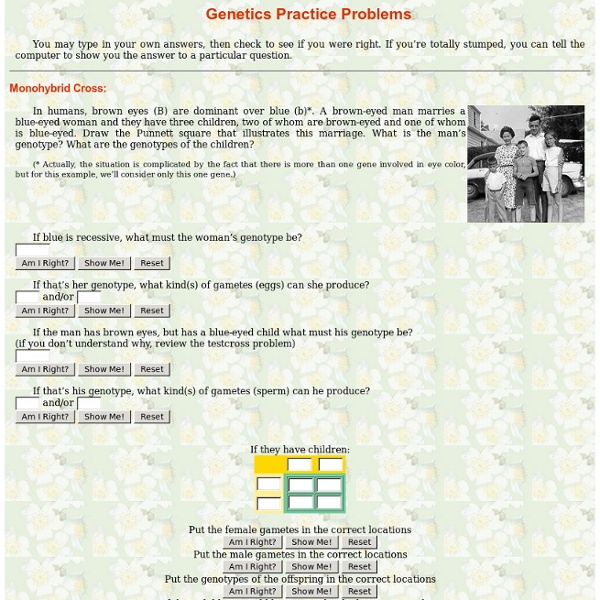Mendelian inheritance
Gregor Mendel, the German-speaking Augustinian monk who founded the modern science of genetics. Mendelian inheritance was initially derived from the work of Gregor Johann Mendel published in 1865 and 1866 which was re-discovered in 1900. It was initially very controversial. When Mendel's theories were integrated with the chromosome theory of inheritance by Thomas Hunt Morgan in 1915, they became the core of classical genetics. History[edit] The laws of inheritance were derived by Gregor Mendel, a nineteenth-century Austrian monk conducting hybridization experiments in garden peas (Pisum sativum).[1] Between 1856 and 1863, he cultivated and tested some 5,000 pea plants. Mendel's conclusions were largely ignored. Mendel's findings allowed other scientists to predict the expression of traits on the basis of mathematical probabilities. Mendel's laws[edit] Mendel discovered that when crossing purebred white flower and purple flower plants, the result is not a blend. Mendelian trait[edit]
Mutation or polymorphism? | The Human Genome
A mutation is defined as any change in a DNA sequence away from normal. This implies there is a normal allele that is prevalent in the population and that the mutation changes this to a rare and abnormal variant. In contrast, a polymorphism is a DNA sequence variation that is common in the population. In this case no single allele is regarded as the standard sequence. Instead there are two or more equally acceptable alternatives. Why are some sequence variants more common than others? Polymorphic sequence variants usually do not cause overt debilitating diseases. The above definitions cannot be applied rigorously. A good example is the allele of sickle-cell disease.
Heredity - Genes and Alleles
As of July 1, 2013 ThinkQuest has been discontinued. We would like to thank everyone for being a part of the ThinkQuest global community: Students - For your limitless creativity and innovation, which inspires us all. Teachers - For your passion in guiding students on their quest. Partners - For your unwavering support and evangelism. Parents - For supporting the use of technology not only as an instrument of learning, but as a means of creating knowledge. We encourage everyone to continue to “Think, Create and Collaborate,” unleashing the power of technology to teach, share, and inspire. Best wishes, The Oracle Education Foundation
Simple Genetics Practice Problems
Name:___________________________________________ 1. For each genotype, indicate whether it is heterozygous (HE) or homozygous (HO) 2. 3. 4. Rr x rr What percentage of the offspring will be round? Rr x R r RR x Rr Practice with Crosses. 5. 6. 7. 8. What percentage of the offspring will also be homozygous? 9. 10. 11. 12. 13. 14. 15.
Allele
Most multicellular organisms have two sets of chromosomes; that is, they are diploid. These chromosomes are referred to as homologous chromosomes. Diploid organisms have one copy of each gene (and, therefore, one allele) on each chromosome. If both alleles are the same, they and the organism are homozygous and the organisms are homozygotes. For example, at the gene locus for the ABO blood type carbohydrate antigens in humans,[3] classical genetics recognizes three alleles, IA, IB, and IO, that determine compatibility of blood transfusions. The word "allele" is a short form of allelomorph ("other form"), which was used in the early days of genetics to describe variant forms of a gene detected as different phenotypes. Dominant and recessive alleles[edit] The term "wild type" allele is sometimes used to describe an allele that is thought to contribute to the typical phenotypic character as seen in "wild" populations of organisms, such as fruit flies (Drosophila melanogaster). and
Homework and Study Help - Free help with your algebra, biology, environmental science, American government, US history, physics and religion homework
Can I take a course at HippoCampus for credit? How do I enroll in a course at HippoCampus? Are there any fees to take your courses? How do I make a comment or ask a question? How do I get individual help with my homework assignment? What are the preferred texts? How can I use HippoCampus in my classroom? How can I use HippoCampus in my home school? Can I use the resources you have available for my homeschoolers? Do you know of any wet lab resources to accompany HippoCampus content? Is there a script, app, or something that can be used to track student use of HippoCampus? Can I share my HippoCampus content with my fellow teachers? Can I download the video? Can I change the size of the video window? Why won't the Environmental Science animations play? What if my page scroll bars or "submit" button are not showing? I can't find closed captioning. Where does the content from your site come from? There is an error in the multimedia presentation. How do I report a course errata item? No. AP Course Ledger



